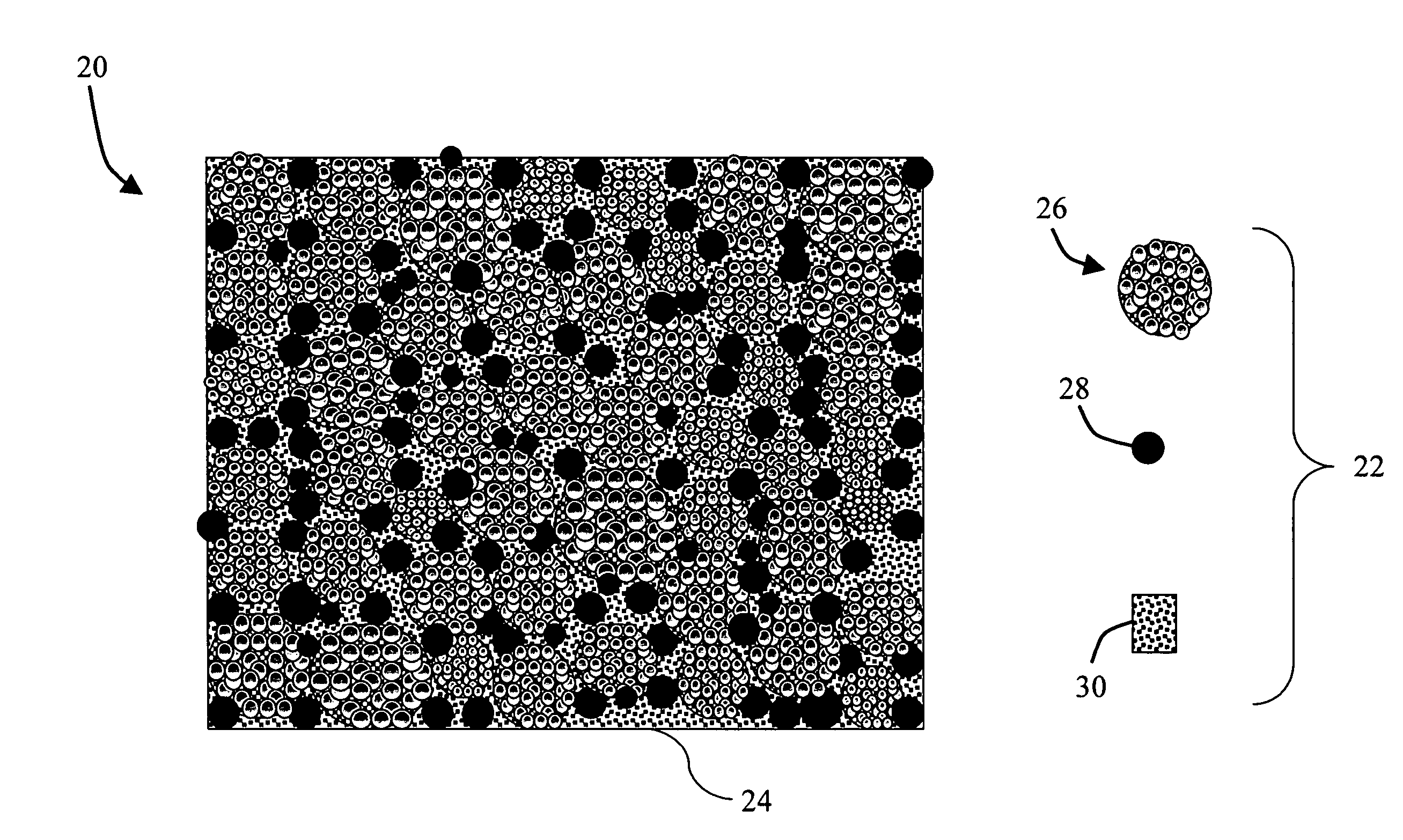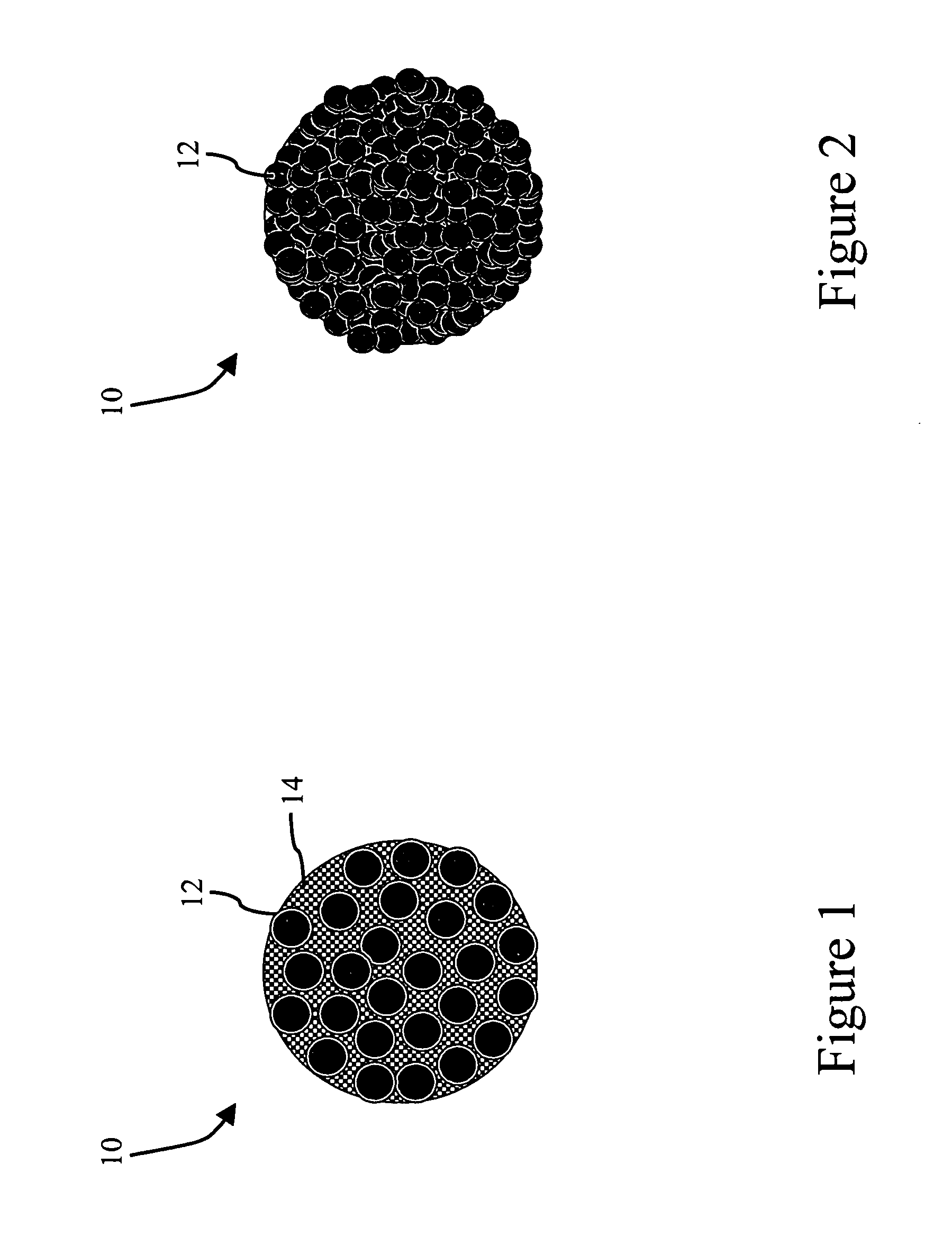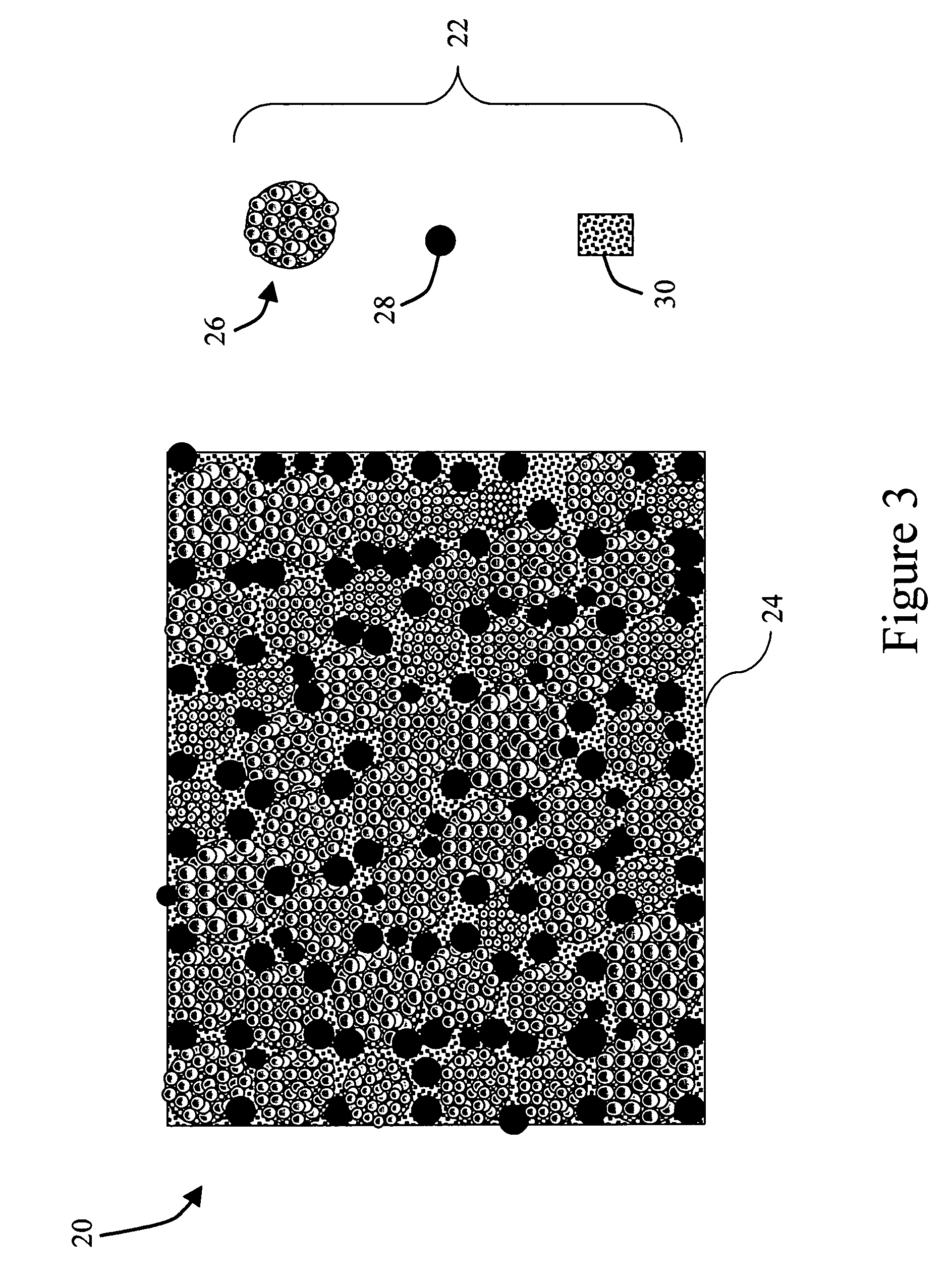Magnetic composites and methods of making and using
a technology of magnetic composites and composite materials, applied in the field of magnetic composites, can solve the problems of mhz, inability to use current micrometer sized magnetic materials at low frequencies, and inability to achieve optimal initial permeability,
- Summary
- Abstract
- Description
- Claims
- Application Information
AI Technical Summary
Problems solved by technology
Method used
Image
Examples
example 1
Formation of a Microscale Particle Assembly
[0063] 10 pounds (lbs) of nickel-zinc ferrite (Ni0.5Zn0.5)Fe2O4 with a grain size of less than about 100 nm were blended with 45.4 grams (g) of a 10 weight percent (wt %) solution of PVA in deionized distilled water (DD water) and dispersed into DD water to form a mixture that was ball milled to obtain a homogeneous slurry. The ball milling was performed using a Union Process Stegvari Attritor System type 18 with a ball / powder-loading ratio of about 4:1, ball milling speed of 300 revolutions per minute (rpm), and time of 1 h.
[0064] The formed slurry was then spray dried to form agglomerated substantially spherical particles. Spray drying parameters included a feeding rate of 600 g / min, an inlet temperature of 475 degrees Fahrenheit (° F.), and outlet temperature of 125 degrees Celsius (° C.). Powders were collected using chamber and cyclone ports. The total powder collected at the chamber was about 6.5 lbs with about 2.5 lbs collected at ...
example 2
Fabrication of a Magnetic Paste
[0066] About 26 g of a plasma densified cyclone collected (Ni0.5Zn0.5)Fe2O4 power having a tapping density of 2.94 was hand mixed with 4.27 g of epoxy resin (ETC 30-3019R CLR obtained from Epoxies, ETC) in a beaker using a spatula for about 0.5 hours until a uniform paste was formed. The paste composition was 14.1 wt % epoxy with 85.9 wt % (Ni0.5Zn0.5)Fe2O4.
[0067] Similarly, about 20 g of plasma densified cyclone collected (Ni0.5Zn0.5)Fe2O4 powder having a tapping density of 2.94 was hand mixed with 23.5 g of Cat 105 (Epoxies, ETC) by hand mixing in a beaker using a spatula. It should be noted that the Cat 105 is used to initiate the hardening of the epoxy resin (ETC 30-3019CLR) described above under thermal heating during device fabrication, by mixing approximately 16 parts by wt of paste formed in Cat 105 with 100 parts by wt of the paste formed with the ETC 30-3019R CLR resin.
[0068] Different ratios of epoxy to ferrite were tried, and the resulti...
example 3
Fabrication of a Multi-Modal Magnetic Paste
[0070] About 29 g of chamber collected (Ni0.5Zn0.5)Fe2O4 powder having average particle size of about 30 micrometers were mixed with 9.45 g of cyclone (Ni0.5Zn0.5)Fe2O4 powders having an average particle size of about 3 micrometers. This powder mixture was then hand mixed with 2.8 g of epoxy resin (ETC 30-3019R CLR from Epoxies, ETC) in a beaker using a spatula for about 0.5 hours until a uniform paste was formed. The paste composition was 11.8 wt % epoxy with 88.2 wt % (Ni50Zn50)Fe2O4 loading.
[0071] Similarly, about 10 g of chamber collected (Ni0.5Zn0.5)Fe2O4 powder having an average particle size of about 30 micrometers were mixed with 3.75 g of cyclone collected (Ni0.5Zn0.5)Fe2O4 powders having an average particle size of about 3 micrometers. This powder mixture was then hand mixed with 1.9 grams of Cat 105 (Epoxies, ETC) by in a beaker using a spatula. The paste composition was 12 wt % Cat 105 with 88 wt % (Ni0.5Zn0.5)Fe2O4 loading. A...
PUM
| Property | Measurement | Unit |
|---|---|---|
| separation distance | aaaaa | aaaaa |
| volume percent | aaaaa | aaaaa |
| volume percent | aaaaa | aaaaa |
Abstract
Description
Claims
Application Information
 Login to View More
Login to View More - R&D
- Intellectual Property
- Life Sciences
- Materials
- Tech Scout
- Unparalleled Data Quality
- Higher Quality Content
- 60% Fewer Hallucinations
Browse by: Latest US Patents, China's latest patents, Technical Efficacy Thesaurus, Application Domain, Technology Topic, Popular Technical Reports.
© 2025 PatSnap. All rights reserved.Legal|Privacy policy|Modern Slavery Act Transparency Statement|Sitemap|About US| Contact US: help@patsnap.com



